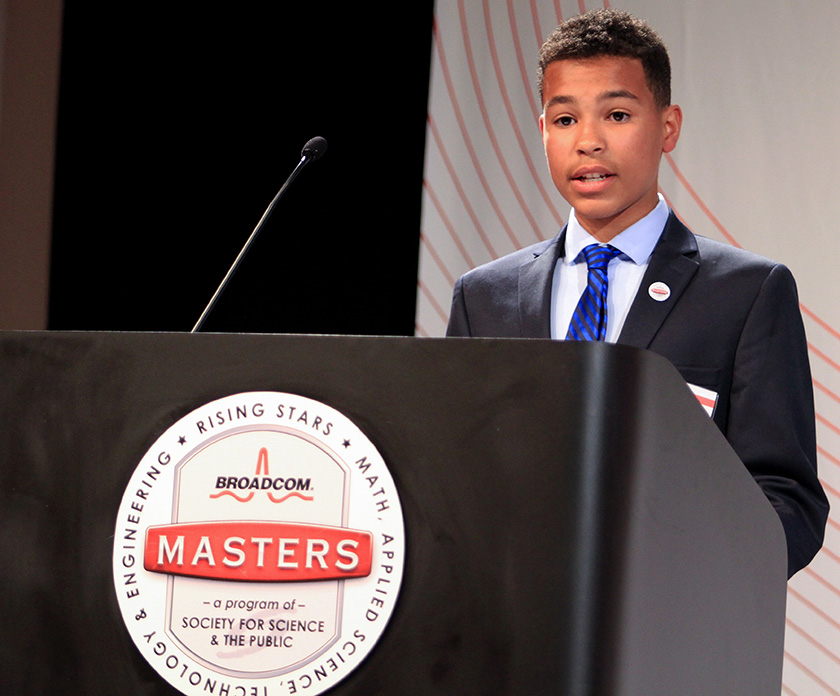Building ion thrusters to take astronauts to distant stars

Building the next generation of ion thrusters to take astronauts to more distant stars — before entering high school. That’s one of Avery Clowes’ goals.
“I’ve been working on powering the next generation of ion thrusters,” said Avery, a 2015 Broadcom MASTERS finalist. “I’ve engineered a system that is potentially cheaper, more efficient, and even beneficial to astronauts.”
Avery built an electrostatic generator that creates electrostatic charges from falling water. His system utilizes electrostatic power generation through Van de Graaff generators.
I’ve been working on powering the next generation of ion thrusters with a cheaper, more efficient system.
Avery was inspired by a nineteenth century device called the Lord Kelvin’s water dropper. He wondered how placement of the coils inside the device affected its voltage.
This device produces electrostatic sparks as two streams of water fall through metal coils into undergrounded containers. The containers are wired to the opposite coil. An imbalance in the charges of droplets creates an electrical current. When the charges reach a high enough level, an arc sparks between the orbs on either side of the device.
“I’m testing different ways of optimizing this process, and hope to come to a higher thrust system in the future,” Avery said.
Support young scientists. Join the Society today!
He tested three different configurations of the Lord Kelvin’s water dropper, moving the inductor coils three inches lower than the last one.
Avery also wanted to see if the biggest charge would be produced when the inductors were at the droplet point of the stream, or the place where water became a series of droplets instead of a cohesive stream. This is the place where a droplet has a chance to be positively or negatively charged.
Avery wants to test a larger version of the device.
Avery wants to build a larger version of the device to test it again. He experienced challenges in keeping the two water sources grounded with each other. And humidity or stray droplets also caused shorts in the system.
This summer, Avery attended the Boston Leadership Institute at the Dana Hall School in Wellesley, Massachusetts. The summer institute focused loosely around biomedical engineering. While there, Avery visited the Karp Lab at MIT.
“It was such an eye-opening experience to see how a lab was actually run and to meet some of the people who work there. I saw pipettes, beakers, and other science tools — just like what I’d been using in class,” he said.
It was an eye-opening experience to see how a lab was actually run.
The camp included lectures and hands-on activities. Avery conducted labs and discussed biomedical ethics.
At the lab, he listened to an undergraduate researcher talk about using biomimicry techniques to design solutions. For example, the heart glue that can seal small open wounds in seconds, was inspired by secretions of a worm.


